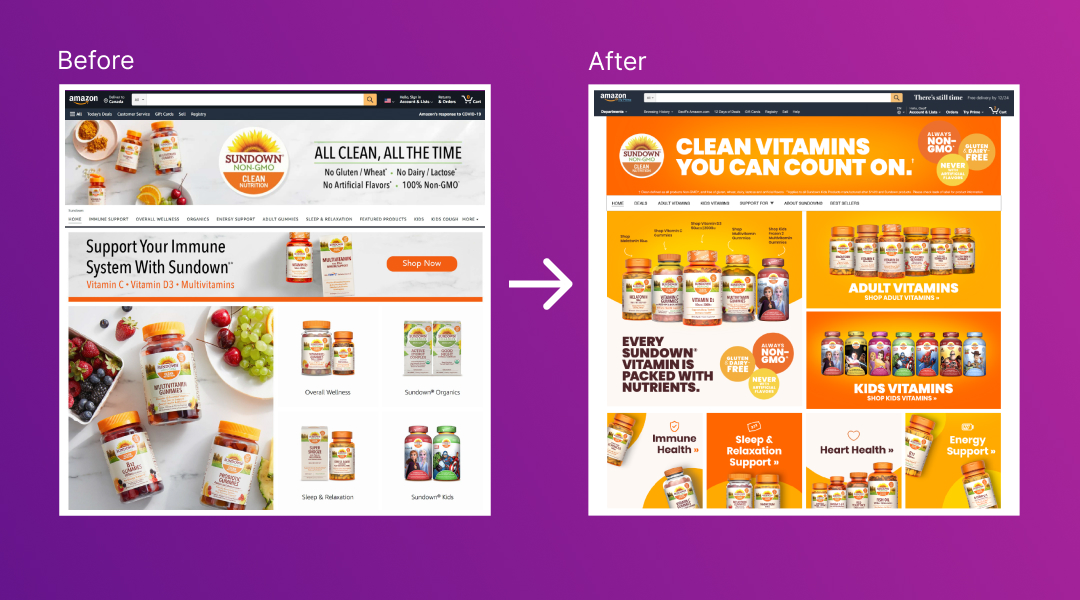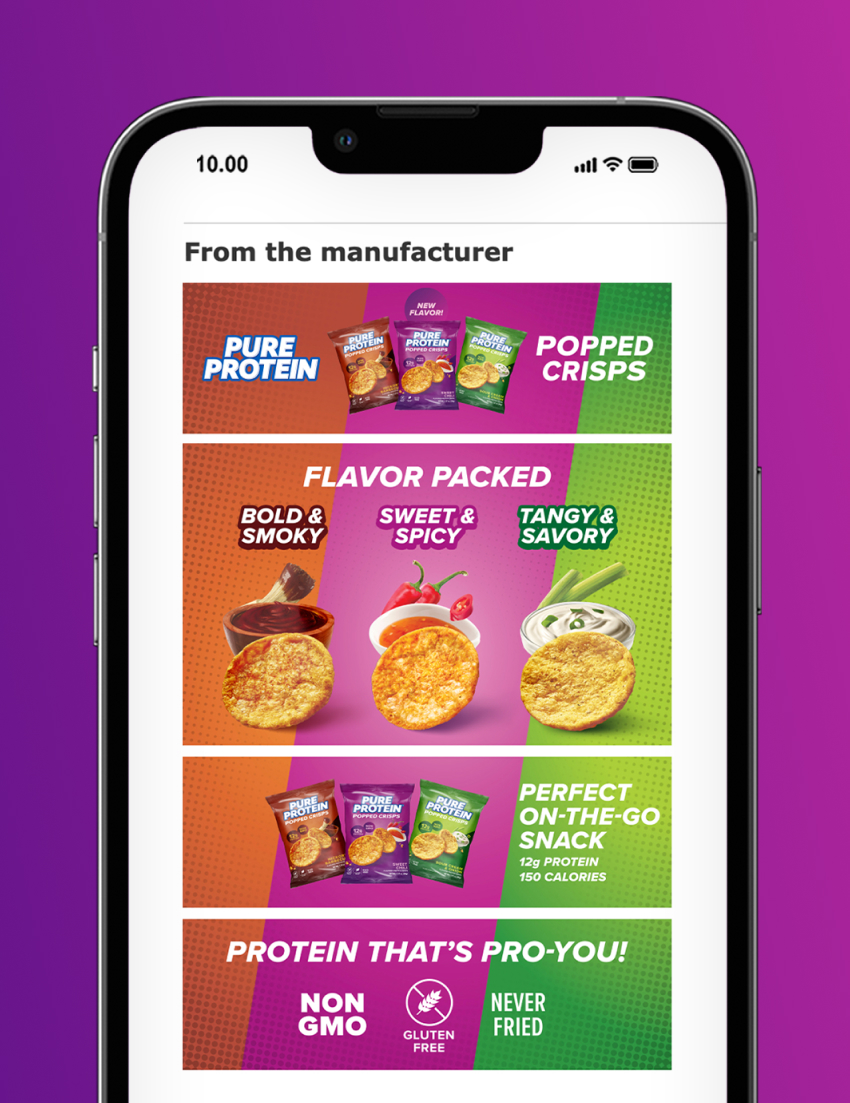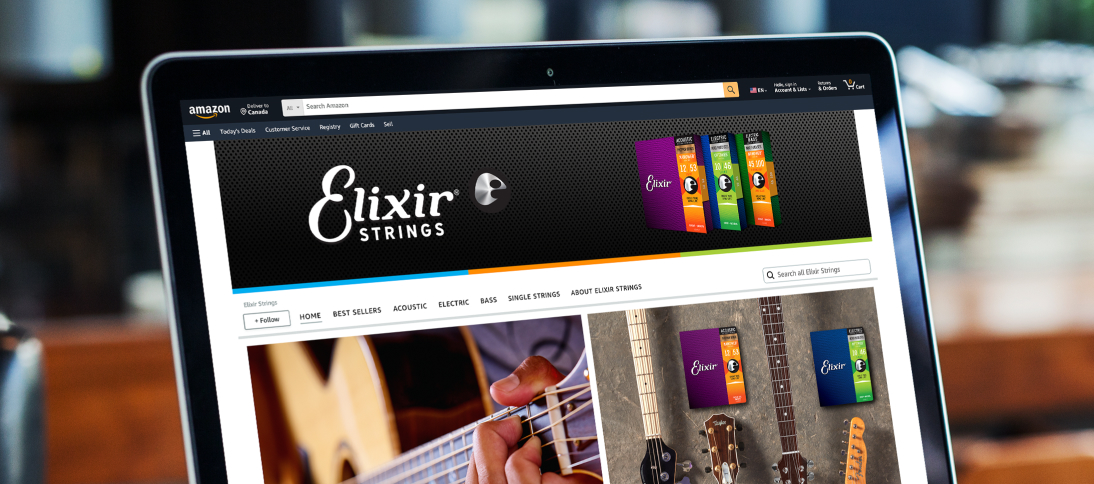If you’ve found this blog (Hi! 👋 Welcome!), chances are you already know how critical Amazon is to building your brand. The stats speak for themselves — in 2023, nearly 38% of online retail sales in the US were through Amazon. In 2024, that’s expected to rise by another 11.7%. Plus, nearly one in three Americans have a Prime membership.
Okay, so you know Amazon is where your brand needs to be, but how can you maximize sales and grow your brand?
With solid brand storefronts and product pages. That’s how.
BSTRO is no stranger to helping brands grow on Amazon. We’ve been building Amazon Brand Stores and creating high-impact product page content since 2018 (since Amazon first started offering branded storefronts!).
Read on for our team’s proven best practices that convert.
Amazon Brand Store Best Practices
Amazon Brand Storefronts are where your brand can shine, free from competitors’ ads vying for shoppers’ attention. It’s your opportunity to tell your brand story and present your products through rich imagery and videos.
When organized effectively and maintained regularly with fresh updates, Brand Storefronts are your secret weapon to keep customers engaged with your brand within Amazon. They’re not just about maintaining visibility — they create richer brand experiences and help boost organic sales through cross-selling and up-selling.
BSTRO’s clients have seen up to 42% increases in organic sales following a brand store refresh — here are a few examples of how we boosted a brand’s Amazon performance through best practices:
Make your brand story pop off your storefront homepage
Your brand’s storefront is where you can make a strong first impression. Bring confidence and clarity to your brand’s Amazon presence — make your differentiators and reasons to believe immediately clear with engaging visuals and video. Then, invite them to explore your full range of product offerings across a few different store pages.
Stores with 3 or more pages have 83% higher shopper dwell time, and 32% higher attributed sales per visitor.

Boost engagement by including shoppable images
Shoppable image tiles help quickly turn visitors from browsers to buyers — interaction with shoppable images can be as high as 26% 🤯
Use lifestyle imagery here to give customers a real feel for your products and enhance the browsing experience. Make it easier for people to imagine the product in their home and give context to the size, scale, or tactile elements of your product.
Feature up to six products in one shoppable image — visitors can tap or hover over them to view basic product details or click through to the full details page.

Make navigation strategic, clear, and intuitive
Step into your customers’ shoes — imagine their journey as they land on your Amazon storefront. Which corners of your brand universe do you want them to experience first?
Got any data and insights from your own DTC website about site navigation? Perfect! Mirror that same branded experience on Amazon, too, so you don’t need to reinvent the wheel.
Remember, Amazon limits storefront navigation menus to showing about 5–6 categories (depending on the text length) in the menu before getting placed in an expandable menu labeled “more”, so make sure you select the most relevant categories to be shown in your main navigation.
BSTRO also recommends reserving one category in your navigation bar for high-value or promotional items. Things like “best-reviewed”, “most popular” or “best sellers” categories can be great starting points for them to explore and learn about the best products you offer.
Optimize for mobile shopping
One-third of Amazon orders are done on mobile devices. And even if the final purchase is made on a laptop or desktop, chances are your customers are browsing on a mobile device beforehand, doing research.
Things to consider for optimizing your products and storefront for mobile are:
- Character limits for product descriptions & bullet points
- Text sizes on images and videos
- How image elements will stack when viewed on mobile versus desktop
Amazon Product Page Best Practices
Make your product content shine in the spotlight
In the Amazon world, B+ content is your brand’s spotlight moment. This “above the fold” content includes your product gallery images, videos, and product description bullet points.
In other words: it’s prime digital real estate. (See what we did there? 😉)
This content is where your brand and product story comes to life.
Each image and video within your product gallery is a chapter in your product and brand story, helping customers instantly understand:
- What the product is,
- What it does — the problem it solves,
- Why it’s a game-changer, and
- How to use it
Let’s look at this guitar strings example. Their key product stories are:
- Key features & benefit claims (corrosion resistance, reliable performance, greater tuning stability, great tone that lasts)
- Experiential descriptors (warm tone vs bright tone)
- Social proof (star-rating + review quote)
- Brand promise (Great tone. Long life.)
- Explainer video

Speaking of video …
A whopping 96% of surveyed consumers say they find video content helpful before hitting that “buy now” button.
Videos are your brand’s storytellers and information expressways, shaping emotional connections and communicating a lot of information, fast. Pop a video on each product page to see a bump in sales and your Amazon vendor scorecard.
Elevate your enhanced content game
Positioned “below the fold” (further down on your product page underneath your main listing images and descriptions), enhanced A+ content can increase sales by up to 10% and also can enhance your organic search rankings within Amazon. A+ content is searchable, so make sure you include meta tags on images!
Use these content modules to be as product-specific as possible, expanding on information included in the image gallery, and strengthening your brand’s reasons to believe. Things such as product benefit tiles, usage instructions, third-party certifications, and social proof are great things to highlight here. Use comparison charts that showcase products against others in your catalog as an effective way to help cross-sell or up-sell.

Measure success on (and off) Amazon
Amazon’s in-platform analytics provides a treasure trove of data and KPIs to track performance. Once your brand’s store is set up, you’ll have access to these reports.
If you’re driving traffic to your Amazon store from an outside channel — like Google Ads, social ads, email marketing, or even your own website — make sure you’re also enrolled in Amazon Attribution.
At BSTRO, we’ve seen clients have anywhere from 12–20% conversion rates from their own website to Amazon to purchase. This isn’t just about convenience for the customer — though that certainly plays a role — it’s about creating a seamless path to purchase wherever they’re most comfortable shopping.
Once you’re enrolled, you can create trackable campaign links (similar to UTMs with Google Analytics) giving you deep insights into how cross-platform marketing efforts are driving sales on Amazon.
Ready to turn browsers into buyers? 🛍️
Reach out and let’s talk about how we can make your brand’s Amazon store experience awesome.




